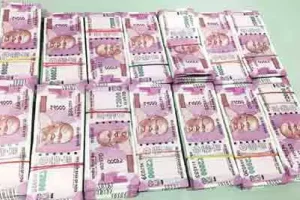Comptroller and Auditor General of India (CAG) has in a report tabled in Parliament stated that large-scale trade mis-invoicing and money laundering of funds is taking place in the country’s gems and jewellery sector.
The report points out that India's import of pearls during the financial year 2013-14 to FY18 was 3 to 10 times more than the average annual value of global pearl production.
“The value of imports of pearls in India being much higher than the value of global production of pearls is indicative of trade mis-invoicing and round-tripping of funds which have been flagged as critical concerns in respect of the gems and jewellery sector,” the auditor report observes.
India's pearl imports primarily came from the UAE, Hong Kong and Thailand, whose contribution in global pearl production was negligible, the CAG says, adding that there was manifold increase in the rate at which pearls were imported in the country.
The auditor further says it noticed irregular trends in growth of quantity and value of imports and exports of rough diamonds during 2010 to 2020 that "require examination at the detailed granular level".
The export-oriented gems and jewellery industry is one of the fastest growing sectors. India is also the largest consumer of gold as well as the largest player in diamond cutting and polishing.
Given the high value of the transactions and foreign exchange involvement due to large amount of diamond and gold imports, the gems and jewellery sector is susceptible to misuse and money laundering, the auditor says.
The Customs Receipt Audit unit of the Comptroller and Auditor General of India as well as the Directorate of Revenue Intelligence had pointed out irregularities including large scale round tripping of gold jewellery and exports of machine made crude to artificially increase the turnover to take status certificate and to enhance credit limits and financing from banks, it adds.
The CAG says it observed various irregularities like non-examination of suspicious business activities; unexplained excess output, short accounting of stocks, and non-verification of differences in claims made by assessee as per records of the assessee vis-a-vis the records of the related party in 33 significant issues involving tax effect of ₹37,909.38 crore. "Such irregularities had the underlying risk of tax evasion that require further probing and detailed examination," says the CAG.
The audit observed in seven out of 84 scrutiny cases that the Income Tax Department allowed aggregate deductions of ₹115.45 crore under Section 10AA against total export turnover of ₹5,654.39 crore even though a major part of export proceeds (ranging from 40% to 100% of the total export turnover) amounting to ₹3,878.95 crore was outstanding for more than six months. The potential revenue loss in these cases worked out to be ₹28.57 crore.




















